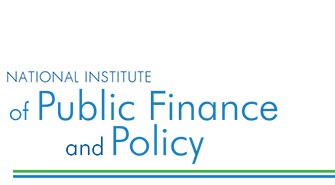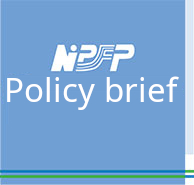How is India Doing? Mid Year Macroeconomic Review
RUDRANI BHATTACHARYA, Associate Professor, National Institute of Public Finance and Policy, New Delhi, India. email:rudrani.bhattacharya@nipfp.org.in
MANISH GUPTA, Associate Professor, National Institute of Public Finance and Policy, New Delhi, India. email:manish.gupta@nipfp.org.in
DINESH KUMAR NAYAK, Economist, National Institute of Public Finance and Policy, New Delhi, India. email:dinesh.nayak@nipfp.org.in
RADHIKA PANDEY, Associate Professor, National Institute of Public Finance and Policy, New Delhi, India. email:radhika.pandey@nipfp.org.in
SUDIPTO MUNDLE, Chairman, Centre for Development Studies. email:sudipto.mundle@gmail.com
|
India is currently facing a grim global economic environment and multiple domestic economic challenges.1
Externally the Ukraine war continues relentlessly, leaving massive death and destruction in its wake. The war and sanctions have together disrupted global supplies, especially for fuel, food-grains and fertilisers. This together with policies of excessive monetary easing in the advanced countries till early 2022 led to exceptionally high inflation. The consequent policy of sharp monetary tightening and rising interest rates has now led to very low or even negative growth in these countries while China has also slowed down and is experiencing deflation. The slowdown in global growth has led to declining growth in demand for India’s exports. Meanwhile, the recent Fitch downgrading of United States (US) sovereign debt, coming on top of the challenging economic conditions cited above, has led to a sharp reduction in foreign portfolio investments (FPI) into most emerging markets, including India.
Domestically there was a rebound of food inflation and widening current account deficits during the first half of 2023-24. The headline inflation rate breached the central bank’s 6 percent upper limit of the target band in July 2023 due to surging food inflation. However, core inflation has continued declining, reflecting the sharp slowdown in growth of consumption and investment demand. The pursuit of monetary and fiscal policy has become quite challenging because of the combination of high inflation with slowing growth. This Policy Brief based on Bhattacharya et. al. (2023) reviews these recent macroeconomic developments, particularly since the latter half of the financial year 2022-23, and discusses the emerging policy challenges.
Figure 1: GDP growth forecast at 6-6.3% for FY 23-24
Source: MOSPI; Bhattacharya, Chakravartti and Mundle (2023)2; Bhattacharya, Bhandari and Mundle (2023)3
Despite a very challenging global political-economic environment and domestic constraints, the economy grew by a robust 7.2 per cent in 2022-23. However, on closer examination it turns out this was largely due to exceptionally high growth of 13.1 per cent in Q1:2022-23, driven by the strong base effect of the sharp GDP contraction in Q1: 2021-22. In the second half of 2022-23, in the absence of a strong base effect, growth decelerated to 5.3 per cent. It is likely that the residual base effect of the Q1 2020-21 contraction also accounts for the strong growth of 7.8 per cent in Q1: 2023-24, with lower growth likely during the rest of the year without this base effect. The growth outlook from high frequency indicators is mixed. Our forecast of annual growth in 2023-24 is 6.3 per cent (Figure 1). Several other forecasts, including those of the RBI, IMF, World Bank etc., are also clustered in the 6.1-6.5 per cent range.
Figure 2: FY 23-24 inflation forecast at 6.2%, above RBI tolerance band upper limit of 6 %
Source: Bhattacharya & Kapoor, 2020
Inflation remained above the 6 per cent upper limit of the RBI tolerance band through most of 2022-23. Then there was a broad based decline in inflation to less than 6 per cent during Q1: 2023-24, presumably a lagged response to the RBI’s Repo rate increase by 250 basis points between May 2022 and February 2023 and withdrawal of its accommodative monetary policy stance. However, inflation again surged to 7.4 per cent, led by food price increases. This is attributable to disruption in global and domestic food supplies. Inflation will moderate later in the year as vegetable and food grain supplies stabilise, supported by the government’s supply side interventions. We forecast an annual inflation rate of 6.2 per cent for the full year 2023-24 (Figure 2).
The hallmark of the central government’s fiscal policy in recent years, including the fiscal year 2023-24, is the massive thrust on capital expenditure. It has been budgeted to increase by over 37 per cent in the current budget on top of very large increases during the last few years (Table 1). This has been made possible largely due to buoyant growth of collections from all taxes, except excise duties, in recent years. The push to capital expenditure has been combined with very retrained revenue spending and fiscal consolidation, with a 0.5 of percent of GDP reduction in the fiscal deficit (FD) each year. However, there are serious concerns whether this 0.5 per cent deficit reduction target can be met this year if the large shortfall in tax revenue observed in Q1: 2023-24 continues during the rest of the year. The 0.7 per cent annual reduction in the FD during the next two years, required to meet the medium term consolidation target of 4.5 per cent FD by 2025-26, will be even higher. Meeting that target will then be well-nigh impossible without a major additional revenue mobilization effort.
Table 1: Revenues and Expenditures of Central Government (% change)
Note: * net of states’ share in central taxes and collections under NCCD to be transferred to NDRF. Source: Controller General of Accounts (CGA); Union Budget
Setting aside the large inter-state variations, ‘all state governments’ as a group have also performed well in own tax revenue mobilization. Own revenues account for 59 per cent of total revenue of the states and their own tax revenue accounts for 85 per cent of their total own revenue. This key component of states’ revenue has been growing at 19 per cent per annum and in 2023-24, the combined all-states OTR has been budgeted to grow by 20 percent. The growth in central transfers, the other component of states’ revenues has been moderate at 7 percent. In 2022-23, total expenditure aggregated across all states increased by 11.7 percent. It entailed an increase in both revenue and capital expenditure, with capital expenditure rising by about 12.8 percent on average. This was modest compared to the massive increase in central government capital expenditure.4 The amount of Rs 1 trillion provided in the 2022-23 budget for capital expenditure loans to states, at zero interest for fifty years, has been enhanced to Rs 1.3 trillion and the approval and disbursement of loans under this scheme has started gaining traction since March 2023. |
States have resumed their fiscal consolidation following the pandemic shock in 2020-21. The combined fiscal deficit (FD) of all-states as percent of GSDP has been lower compared to all years since 2014-15 except 2019-20 (Figure-3). States’ fiscal consolidation is largely being driven by buoyant own tax revenues. This fiscal consolidation path is consistent with that recommended by the 15th Finance Commission. For 2023-24 the FD for all-states has been budgeted at FD round 3.2 percent of GSDP.
Figure 3: Deficits - States (% of GSDP)
Note: Deficit (-)/Surplus (+) Source: Controller and Auditor General (C&AG); State Budgets and MoSPI
Financial markets have witnessed an unusual phenomenon of persistent surplus liquidity despite Repo rate increases by 250 basis point between May 2022 and February 2023, the withdrawal of the accommodative monetary policy stance by the RBI, and rising yields especially on the call money rate and short maturity sovereign bonds as well as corporate bonds, has flattened yield curves. The surplus liquidity has been attributed to a skewed liquidity distribution, where only some banks have a surplus liquidity. The RBI has been conducting variable rate reverse Repo operations and introduced the Incremental Cash Reserve Ratio of 10 per cent in its August monetary policy review, after which the surplus liquidity finally shrunk. Figure 4 shows the liquidity conditions till the mid of August.
Figure 4: Liquidity conditions
Source: RBI, Money Market Operations
Meanwhile, commercial bank credit growth has been strong this year, thanks especially to their much reduced non-performing assets ratio (NPA), which has enabled enhanced lending operations (Figure 5). Particularly heartening in this context is the sharp reduction in public sector banks NPAs and improvement in other performance parameters. However, much of the credit flow has gone to services, including non-bank finance companies, real estate, and personal loans, not industry.
Figure 5: Credit growth (y-o-y percentage change)
Source: RBI Turning finally to the external sector, the current account deficit (CAD) had come down to barely 0.2 per cent of GDP by the end of March 2023, mainly because of the reduction in the merchandise trade deficit exceeded the reduction in the net surplus of service exports. There was a corresponding reduction in capital inflows. However, the CAD started widening again in Q1:2023-24 (Figure 6), with the decline in exports exceeding the decline in imports. Persistent BoP stress suggests that the policy of ad hoc increases in protective tariffs and non-participation in regional FTAs needs to be revisited.
Figure 6: Trade deficits started widening again in Q1 FY 23-24 compared to Q4 22-23 due to an increase in the goods trade deficit & decline in the services trade surplus
Source: RBI, & NIPFP Computations
There was a corresponding increase in capital inflows, especially in FPIs (Figure 7). However, during the last few weeks there has been an FPI flight to safety from emerging markets, including India, because of increased global risks: the downgrade of U.S sovereign debt by Fitch, rebound in food, fertiliser and fuel prices due to supply disruption, policy rate hikes by the US Fed and other major central banks and the growth slowdown in China. These adverse global developments have been reinforced by the July spike in domestic inflation.
Figure 7: Foreign Direct Investment was stable while Foreign Portfolio Investment flows peaked in Q1 23-24
Source: RBI, National Securities Depository Limited (NSDL), & NIPFP Computations
At present these adverse conditions in the global and domestic economy are still persisting. |




